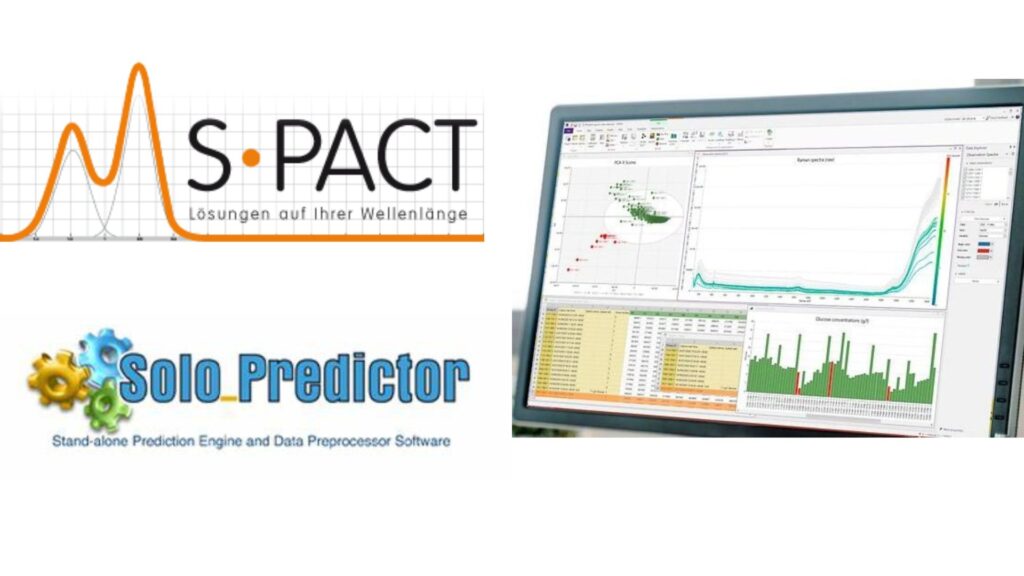The Value of Raman Spectroscopy for Process Monitoring and Control
The last post laid out reasons why Raman is a good tool for Process Understanding. In many cases, if a tool adds value for process understanding in development, it can also add value for process monitoring and process control. This is the basis and context for this post. What are the key points to consider when deciding whether to deploy Raman as a process monitoring tool, with the possible goal of using it to its maximum potential as a process control technology with full loop feedback control? In this post, we will discuss points of importance to that subject including…
- Ruggedness and Reliability
- Configuration to match process needs – the Probe
- Configuration to match process needs – Process Communication
- Ease of instrument use – Software
- Integration with partners to extend value
- How to make use of Raman data
- Expert support that contributes to your success
Ruggedness and Reliability
In the previous post, it was established that a premium should be placed on performance because it gives you the best chance to derive critical information. But that brings us to another point. As you have also heard from our previous talks and presentations, having the greatest technology in the world is of no use if it is not rugged and reliable (especially in a process). If a high-performance instrument is constantly under repair or for some reason or it is not performing at its peak and failing to give trustworthy information, it will quickly be unplugged and set in a corner to collect dust. Reliability is key. Many, if not most, process-oriented people will tell you that reliability and dependability are more important than performance. Of course, you’d love to have both! But a great number of process people would sacrifice a modicum of performance if they could be assured of reliability. This attribute is at a premium and Tornado has paid close attention to making their instruments trustworthy and dependable in the process. Reliable and durable spectrometers with no moving parts are what we feature.
Configuration to Match Process Needs – The Probe
Another consideration is conforming the instrument to your process needs. The ability to select a probe that matches your process requirements, or customize one if something off-the-shelf does not fit, is crucial. Whether that is an immersion (contact) probe, a non-contact probe that peers through a sight glass, or the use of a flow cell, making the sampling fit the need rather than bending the process to the sampling limitations is a key point. At Tornado, we recognize this and, while we make off-the-shelf options that commonly fit many scenarios available, if you need a particular length, diameter, material, fitting, or flange to conform to your process, we are prepared to fabricate what is required.

Configuration to Match Process Needs – Process Communication
When talking about conformance to process needs, the availability of necessary deployment features is also something of critical importance. When an instrument is put in the process, it needs to be integratable. The ability to communicate with SCADAs or DCS systems is a must. Tornado makes available ModBus and OPC UA communication protocols with their instruments and can adapt to 4 – 20 mA communication when that is needed. The ability to enhance customization with PLCs is something we also do routinely.
Ease of Instrument Use, particularly Software
The ability to operate an instrument with a minimum number of nuances is crucial. Straightforward instrument control with a handful of understandable key parameters is the goal. Streamlining the key functionality while avoiding “feature creep” makes the instrument more routinely usable by Operators. At Tornado, our legacy instrument, the HyperFlux™ PRO Plus (HFPP), uses software that is one page and easy to learn. It will take 15 minutes to teach new users how to use our software and, if they don’t use it for two months, they will still remember how to use it when they come back to use the instrument again. With our newer Raman spectrometer, the Process Guardian™ Raman (PGR), we go one step further to incorporate the software into the instrument. Windows updates are no longer a worry and there are no more arm wrestling matches with IT about the configuration of a PC. These enhance the ease of use and employability.
Integration with Partners to Extend Value
Taking the last point one step further, the ability to be controlled by enterprise software packages such as SiPAT (Siemens), synTQ (Optimal), or PharmMV (Perceptive) is important. Also, the ability to work with key complementary technologies such as a Sartorius Ambr system, a Technobis Crystalline device, or a Blazemetrics Particle characterization system will help you to get the most out of your Raman instrument. At Tornado, we have partnerships with all of the partners listed to enhance the utility of our Raman equipment.
How to Make Use of Raman Data
When talking about deployment, it would be remiss of us to neglect the “elephant in the room”, which is the subject of how to make the Raman data you collect work for you. This might be the key barrier in many cases to fast deployment. It can be akin to imposing order to chaos. Raman is a valuable tool oftentimes because multiple Critical Quality Attributes (CQAs) can be measured at the same time with one Raman measurement. Raman detects many things. But how do you harness that power? Most of the time this is through multivariate analysis (MVA) software. One thing we do at Tornado is to offer the user choices. If you already know how to use SIMCA (Sartorius), Peaxact (S-PACT), or Solo (Eigenvector), we make provisions with prediction engines to allow the use of models you contract with those packages. This means that you do not have to learn how to operate another piece of complex software to make use of the powerful data that you get from a Tornado instrument.

But what about people who have no experience with MVA techniques nor the desire or the time to learn how to use such software to make their Raman instrument work for their purposes? This is often why Raman is not considered for process deployment despite the powerful information it can bring to the table. The in-house expertise to make it work using an MVA approach is not available. For those in this situation, there are three points that should be considered. The first is that, because Raman has well-resolved bands that are attributable to specific functional groups related to the compounds in your sample, univariate analyses are often effective if your instrument has both the resolution and the sensitivity to make it possible. As an example, we just published an application note that details the use of univariate analysis for a tablet coating process. Gas-phase analysis is another area where univariate analysis is often effective. Using peak areas or peak heights is a common approach for many techniques and requires no in-depth training to utilize. In many cases, this approach can be applied to Raman data.
A second point with respect to data analysis is the fact that, in cases of some common measurements, there may be starter or even plug-and-play methods available to shorten the time to implementation and lessen the burden on the end user. For example, glucose and lactate are common measurements in Upstream Bioprocessing. We can offer methods for those measurements that allow a significant head start for the development of a method to be deployed by a customer. We are even finding that there are cases where, oftentimes, these so-called starter methods can be deployed as final or near-final, “plug-and-play” methods. This relieves much of the obligation that would otherwise be put on the user.
The final point in this discussion about making use of your Raman data is the fact that, if you don’t have in-house expertise, it would be helpful if your vendor offered method development services to give you a lifeline to ultimate deployment. At Tornado, a talented group of specialists are available for work of that type. We have worked with many applications in many industrial scenarios and can handle a multitude of challenges.
Expert Support That Contributes to Your Success
In the spirit of this last comment, it is worth discussing the aspect of support. Most people will not buy an instrument like a Raman spectrometer without confidence that the supplier can offer reliable and effective support. You have to be able to discern whether marketing hype is simply there to create illusions of competence and concern about your success, or whether a supplier knows what it takes to make you successful. At Tornado, we have given our support group the moniker of the “Customer Success Group”, or CSG for short. We gave ourselves this name because we believe in the mission. We endeavor to work with each customer to give them expert guidance in making their substantial, internally visible investment pay off. We believe that we are successful when our customers are successful. Timely and helpful responses to inquiries, diligent support, expert services that pay for themselves, and written guidance in the form of manuals, best practice guides and application notes are a few of the things that are available to Tornado customer partners. For those who have worked with us, they know these things to be true.

When deciding on whether Raman is a good tool to add to your Process Analytical Technologies repertoire, there are many factors to consider. When it comes down to it, you need an instrument that delivers measurements you can trust and a vendor with expertise and dedication to give you a deployment you can rely on. This is what we strive to deliver at Tornado.



